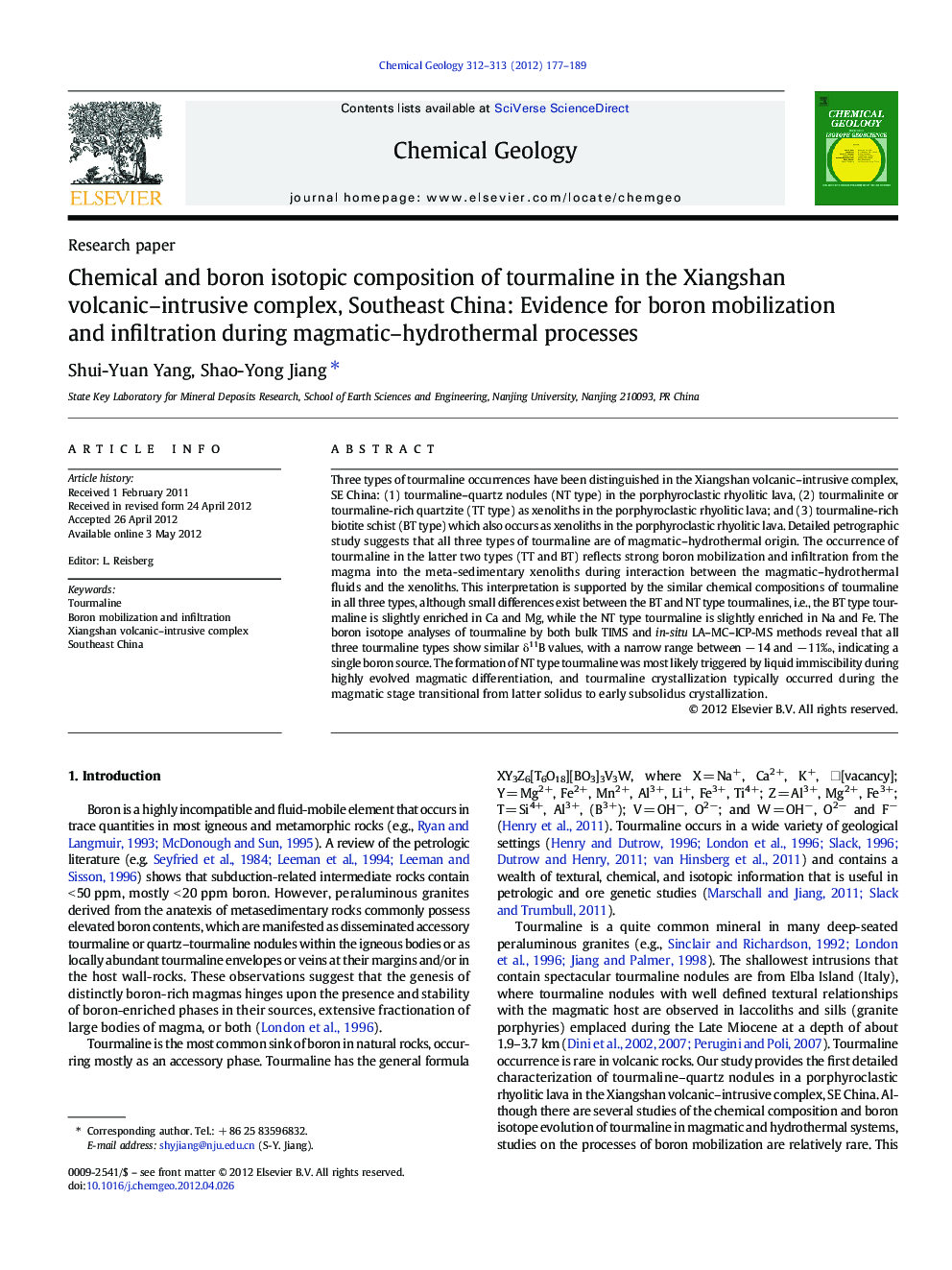| کد مقاله | کد نشریه | سال انتشار | مقاله انگلیسی | نسخه تمام متن |
|---|---|---|---|---|
| 4699406 | 1637644 | 2012 | 13 صفحه PDF | دانلود رایگان |

Three types of tourmaline occurrences have been distinguished in the Xiangshan volcanic–intrusive complex, SE China: (1) tourmaline–quartz nodules (NT type) in the porphyroclastic rhyolitic lava, (2) tourmalinite or tourmaline-rich quartzite (TT type) as xenoliths in the porphyroclastic rhyolitic lava; and (3) tourmaline-rich biotite schist (BT type) which also occurs as xenoliths in the porphyroclastic rhyolitic lava. Detailed petrographic study suggests that all three types of tourmaline are of magmatic–hydrothermal origin. The occurrence of tourmaline in the latter two types (TT and BT) reflects strong boron mobilization and infiltration from the magma into the meta-sedimentary xenoliths during interaction between the magmatic–hydrothermal fluids and the xenoliths. This interpretation is supported by the similar chemical compositions of tourmaline in all three types, although small differences exist between the BT and NT type tourmalines, i.e., the BT type tourmaline is slightly enriched in Ca and Mg, while the NT type tourmaline is slightly enriched in Na and Fe. The boron isotope analyses of tourmaline by both bulk TIMS and in-situ LA–MC–ICP-MS methods reveal that all three tourmaline types show similar δ11B values, with a narrow range between − 14 and − 11‰, indicating a single boron source. The formation of NT type tourmaline was most likely triggered by liquid immiscibility during highly evolved magmatic differentiation, and tourmaline crystallization typically occurred during the magmatic stage transitional from latter solidus to early subsolidus crystallization.
► Three types of tourmaline occur in the Xiangshan volcanic rocks, SE China.
► All the tourmalines show a narrow range of δ11B values (− 14‰ to − 11‰).
► Boron isotope data suggest a single boron source for the tourmaline formation.
► A magmatic–hydrothermal origin is proposed for the tourmalines in xenoliths.
► This study provides a good example of magmatic boron infiltration into the xenoliths.
Journal: Chemical Geology - Volumes 312–313, 18 June 2012, Pages 177–189